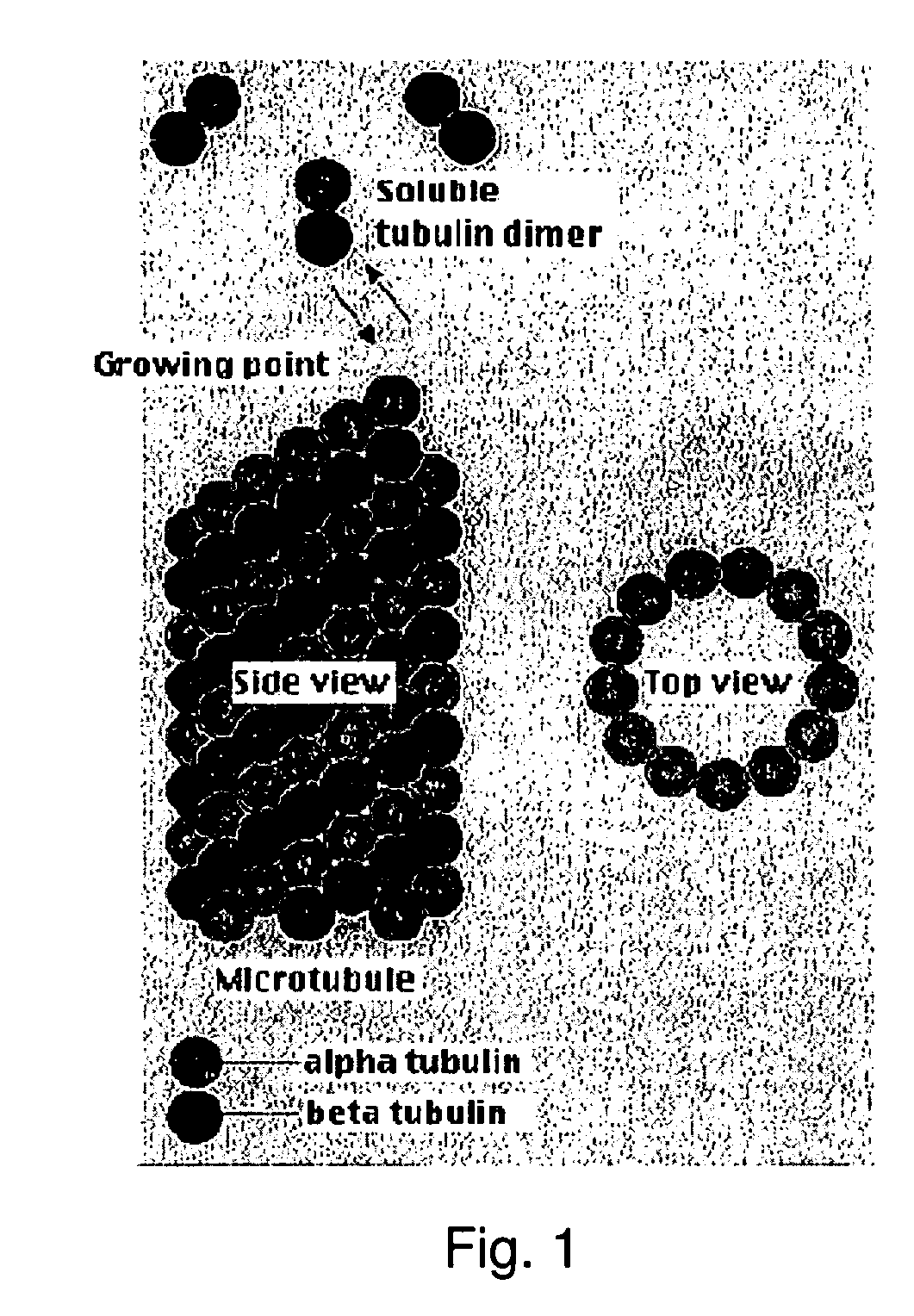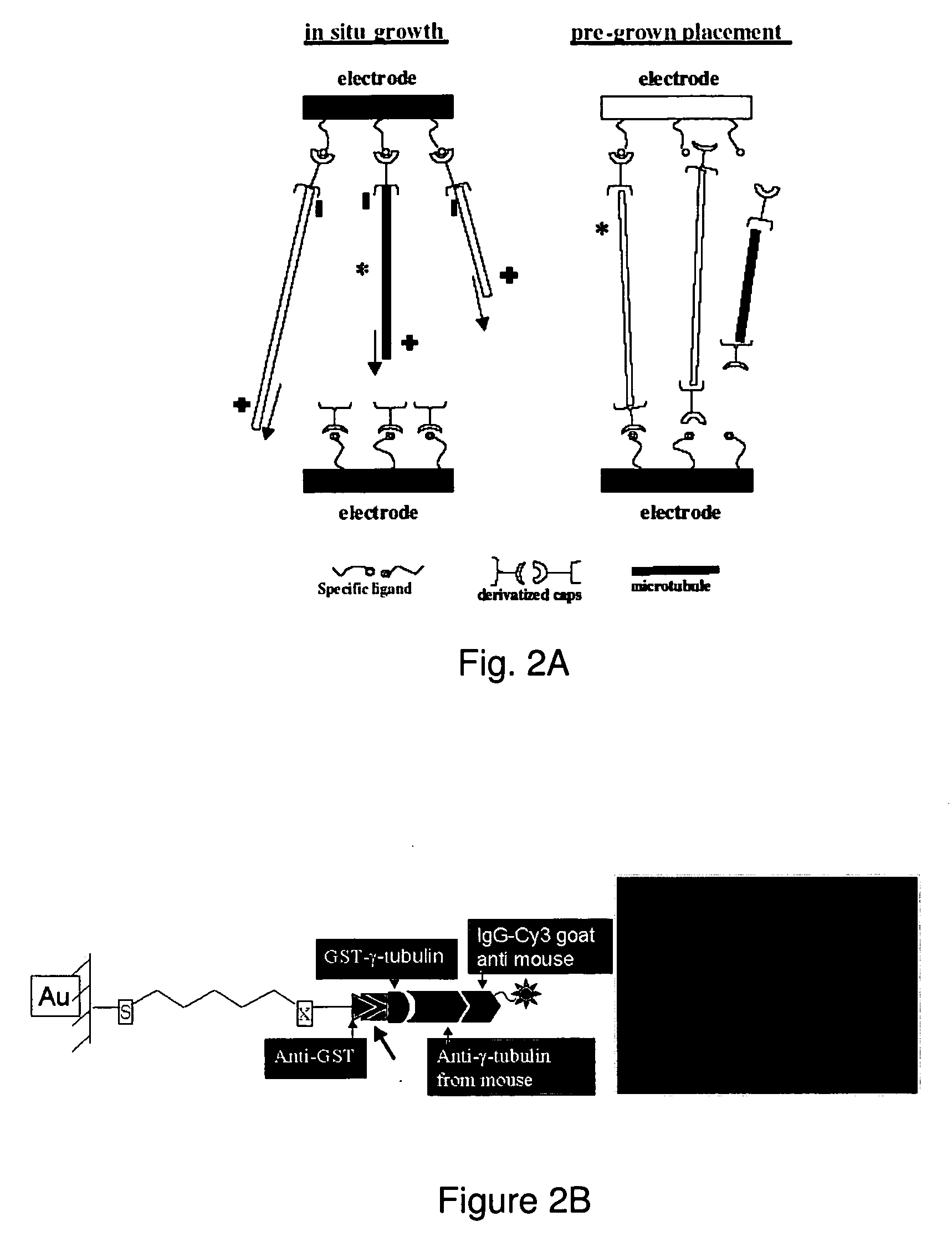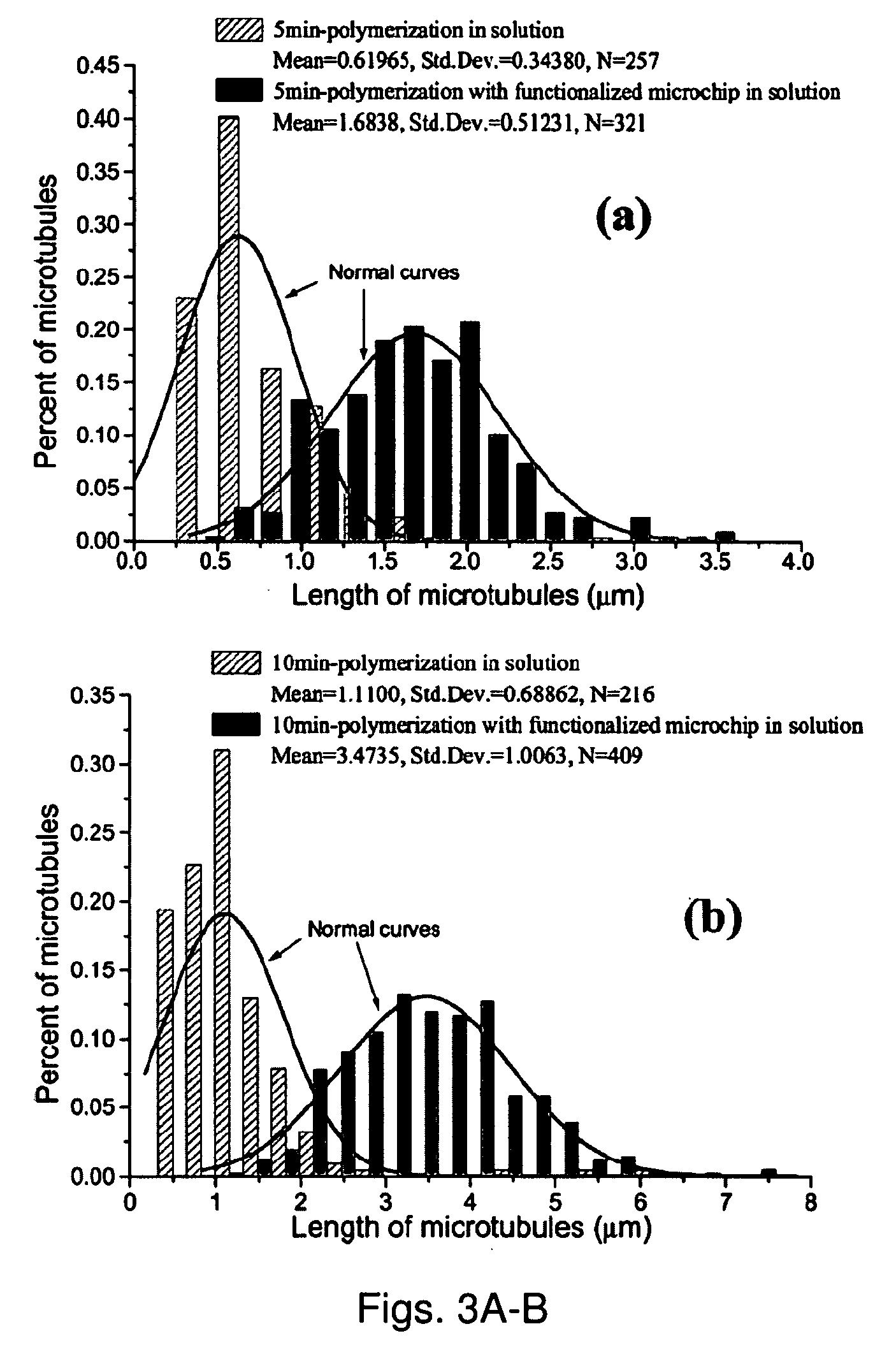Directional self-assembly of biological electrical interconnects
a biological electrical interconnect and self-assembly technology, applied in the direction of nanoinformatics, liquid/solution decomposition chemical coating, peptide sources, etc., can solve the problems of inability to nucleate microtubules in tubulin solutions, and inability to fully realize the effect of gamma-turcs and tubulin solution nucleation
- Summary
- Abstract
- Description
- Claims
- Application Information
AI Technical Summary
Problems solved by technology
Method used
Image
Examples
example 1
Cloning and Expression of Tubulin
[0075] We designed and cloned a γ-tubulin fusion protein could be used to initiate microtubule growth in a precise fashion, especially after attachment to a surface of interest. Additional details of the experiments conducted can be found in Yang et al. (2006) Biotechnology Progress 22: 303-312, which is incorporated by reference herein in its entirety.
[0076] Analysis of all of the known human γ-tubulin sequences allowed the design of specific oligonucleotides (oligos) that could then be used as primers in polymerase chain reaction (PCR) to clone γ-tubulin. In addition, those oligos that were designed to be used to PCR amplify the γ-tubulin would also provide the recombinant form with sequences that allow it to be made as a recombinant fusion with glutathione —S— transferase (GST) sequence tag. Specifically, the human sequence that was used to design primers was from NCBI (NM—001070, Homo sapiens tubulin, γ-1, TUBG1). They are:
5′-GGAATTCTGCCGAGGG...
example 2
Surface Functionalization
[0089] A protein nucleation method for MT growth from gold substrates has been developed based on the self-assembly of reactive alkanethiols together with the engineered fusion protein. Oxidized silicon wafers were patterned with gold electrodes, followed by treatment with piranha solution to clean organic contaminants and to activate the gold surface. An anti-GST antibody was bound to a SAM of carboxylic acid-terminated alkanethiols on the gold surface through the carboxylic acid group at the end of the alkyl chains (FIG. 2B). Anti-GST is a specific antibody for selective binding of GST attached to recombinant proteins, in our case, the microtubule-nucleating fusion protein, GST-γ-tubulin. Additionally, a specific antibody that binds γ-tubulin is then recognized by a secondary antibody that has a fluorescent tag (IgG-Cy3) and is used to quantify the extent of the formation of the protein assembly. Strong fluorescence from a functionalized gold surface on a...
example 3
MT Growth
[0091] For this study, we used tubulin (>99% pure) prepared from bovine brain extracts and modified with covalently linked fluorescein (Cytoskeleton Inc). The fluorescein-modified tubulin was stored at −70° C. in storage buffer (pH 6.8; 80 mM piperazine-N,N′-bis 2-ethanesulfonic acid sequisodium salt (PIPES), 1 mM magnesium chloride (MgCl2); 1 mM ethylene glycol-bis(b-amino-ethyl ether) N,N,N′,N′-tetra-acetic acid (EGTA) and 1 mM guanosine 5′-triphosphate (GTP)).
[0092] In-vitro MT assembly was performed in PEM 80 buffer (80 mM PIPES, 1 mM EGTA, 4 mM Magnesium chloride (MgCl2), using KOH to adjust PH to 6.9) using a final concentration of tubulin at 0.25 mg / ml (2.3×106 M). Polymerization was initiated by the addition of GTP (final concentration is 0.25 mM) in the presence of taxol (final concentration is 10 μM). Taxol reduces the competing “depolymerization” process.
[0093] In order to test the specificity of the interaction between MTs and the γ-tubulin functionalized sub...
PUM
| Property | Measurement | Unit |
|---|---|---|
| inner diameter | aaaaa | aaaaa |
| inner diameter | aaaaa | aaaaa |
| pH | aaaaa | aaaaa |
Abstract
Description
Claims
Application Information
 Login to View More
Login to View More - R&D
- Intellectual Property
- Life Sciences
- Materials
- Tech Scout
- Unparalleled Data Quality
- Higher Quality Content
- 60% Fewer Hallucinations
Browse by: Latest US Patents, China's latest patents, Technical Efficacy Thesaurus, Application Domain, Technology Topic, Popular Technical Reports.
© 2025 PatSnap. All rights reserved.Legal|Privacy policy|Modern Slavery Act Transparency Statement|Sitemap|About US| Contact US: help@patsnap.com



